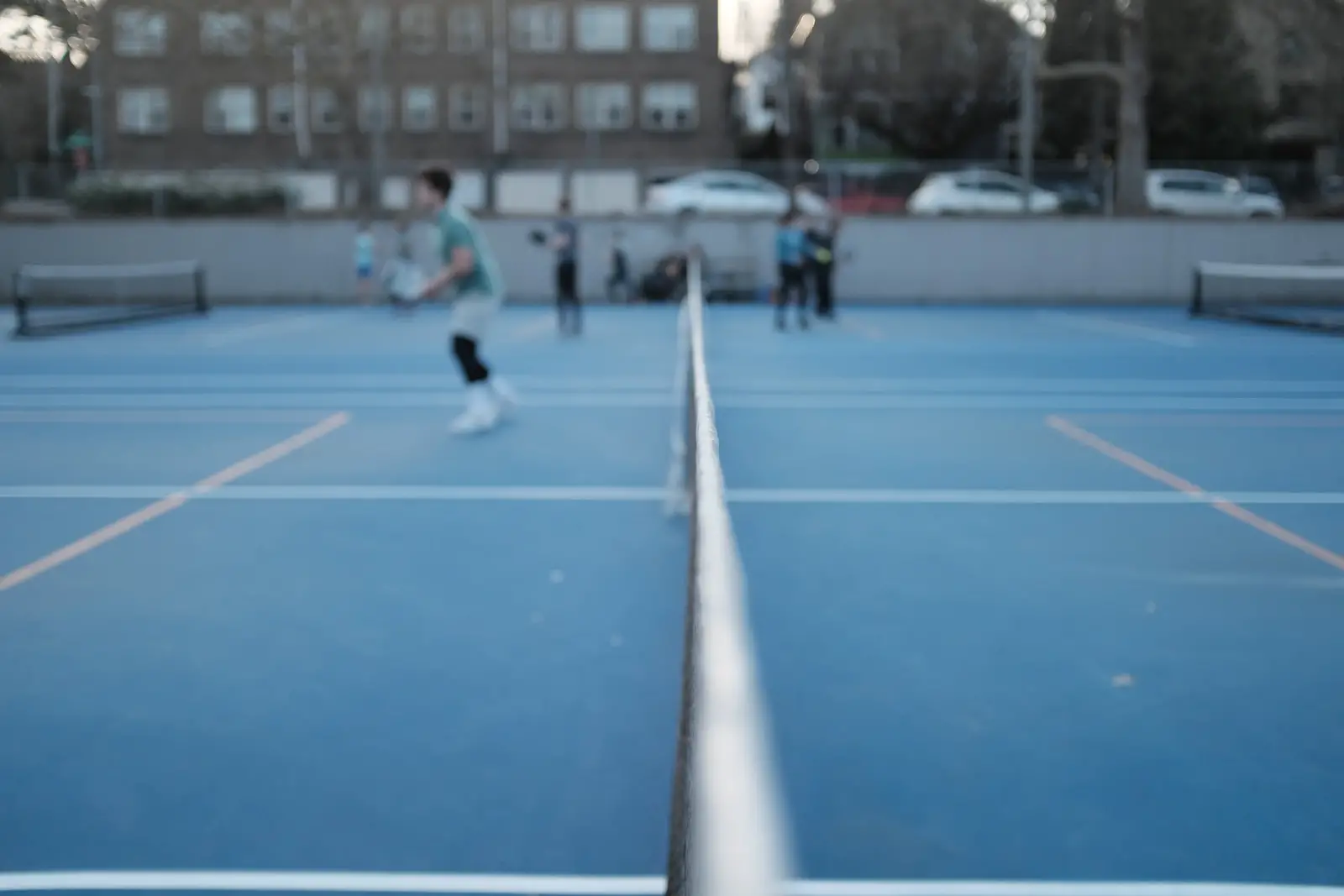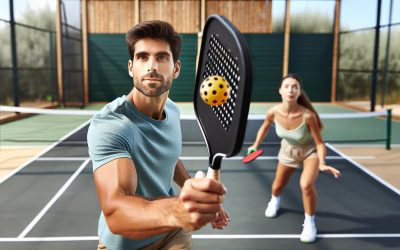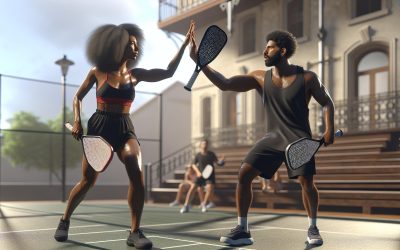If you’re not yet familiar with the term ‘Professional Pickleball’, don’t worry. You’re not alone. It’s a sport that’s rapidly gaining traction, and I’m here to give you the lowdown.
Pickleball, a hybrid of tennis, badminton, and ping-pong, has been around since the 1960s. But it’s only recently that it’s started to make waves in the professional sports world. With its easy-to-learn rules and fast-paced gameplay, it’s no wonder more and more people are getting hooked.
So whether you’re a seasoned athlete looking for a new challenge, or just someone who’s curious about this increasingly popular sport, stick around. I’ll be diving into the ins and outs of professional pickleball, and who knows, you might just find your new passion.
What is Professional Pickleball?
Harnessing the thrill of tennis, the strategy of badminton, and the quick reflexes needed for ping-pong, professional pickleball is quickly becoming a sensation. But what exactly is it? Let’s delve into the ins and outs of this fascinating sport.
Originating in the mid-1960s, pickleball was initially a backyard pastime. Fast forward to the present day, it’s a professional sport with official tournaments, associations, and even passionate fans around the globe.
In professional pickleball, the game is played on a court similar to a badminton court. However, the net is lower, resembling a tennis court more closely. Players equip themselves with solid paddles made of lightweight composite materials and a plastic ball with holes, reminiscent of a whiffle ball.
Perhaps one aspect setting Professional Pickleball apart is the “no-volley zone”. This rule prevents players from smashing the ball while within seven feet of the net, ensuring a more strategic, less power-driven game.
Let’s get into the gameplay dynamics. In professional pickleball, there are two main types of play:
- Singles Play: Similar to tennis, this is a one-on-one match. The serving player serves from the right-hand court when their score is even and from the left when their score is odd.
- Doubles Play: This is played with teams of two. In doubles, both players on a team serve before service switches to the opposing team, adding another dimension of strategy to the game.
The History of Pickleball
Now that we’ve got a handle on the basics of professional pickleball, let’s turn our gaze to its origins. Believe it or not, this lively sport has an interesting history, rooted in humble beginnings on a family’s backyard court.
Pickleball was born in the mid-1960s on Bainbridge Island, Washington. It started out as a creative solution to the boredom faced by the kids of inventors Joel Pritchard and Bill Bell. With a worn-out badminton court and a lack of proper equipment, they improvised with ping-pong paddles and a whiffle ball.
In the days that followed, Barney McCallum, another dad from the neighborhood, joined the fray. The trio fine-tuned the rules, balancing the game to be fun, competitive, and accessible to their entire families. That’s how pickleball’s distinctive “no-volley zone” came into existence—to level the playing field between players of varying heights and playing styles.
As the game gained popularity, it escalated from a fun family hobby to a new sport in its own right. It caught the interest of people all around Bainbridge Island, and before long, it spread to the mainland. It wasn’t long before pickleball made its journey from the backyard into community sports centers, senior fitness programs, and, eventually, professional sports arenas.
The growth of this sport has been truly incredible. Today, it’s estimated that there are over 2.5 million pickleball players in the United States alone. Worldwide, it’s being played in thousands of locations. There’s a Pro Pickleball Association (PPA) and even a US Open pickleball championship.
| Metric | Quantity |
|---|---|
| US Pickleball Players | 2.5 Million |
| Worldwide Locations | Thousands |
| Professional Associations | 2 (PPA & US Open) |
From an improvised game on a shabby badminton court to exciting professional competitions around the globe, pickleball’s journey is a testament to the magic that can happen when simple, creative fun evolves into something greater. Now, with major tournaments and associations backing it, pickleball can hold its own against its predecessor sports of tennis, badminton, and ping-pong. But of course, this evolution didn’t happen overnight—it’s a fascinating tale involving many players, places, and paddle hits.
Why Pickleball is Gaining Popularity
After understanding the origins and growth of pickleball, it’s only natural to wonder why this sport has caught on like wildfire. Looking at the numbers, there are over 2.5 million pickleball players in the United States alone. It’s also played in thousands of locations all over the world.
Key factors contribute to pickleball’s surge in popularity. For one, it’s a very accessible game. The rules are easy to learn, making it less daunting for beginners compared to other racket sports. This simplicity and accessibility make the game attractive to people of all age groups and fitness levels.
Here’s a breakdown on some essential data:
| Reasons for Popularity | Description |
|---|---|
| Accessibility | Rules are easy to learn and the game can be played at all levels of fitness |
| Cost-effectiveness | Equipment and membership fees tend to be cheaper than other sports |
| Social Interaction | The sport encourages positive social interaction among players |
| Fitness | It’s a fun way to get a cardio workout and improve coordination |
Beyond accessibility, most find the game cost-effective. Compared to sports like tennis or golf, pickleball does not require as hefty an investment in equipment or membership fees. It’s also seen as a social sport. Players don’t just enjoy the match but find it an excellent platform to meet and interact with people.
For those looking to get in some exercise, pickleball serves as a fun cardio workout while also improving coordination. It’s not just about hitting the whiffle ball but also about moving strategically across the court.
With the Pro Pickleball Association (PPA) and the US Open pickleball championship hosting tournaments, competitive players have a platform to showcase their skills. These tournaments have brought more visibility, attracting new players and inspiring veterans.
If you’re seeking a sport that’s fun, involves strategy, and offers a community, pickleball just might be your game. Not to mention, it’s an integral part of many senior fitness programs, proving that it’s never too late to pick up a paddle and join the fun. The rise of pickleball from a simple backyard game to the professional ranks speaks volumes about not just the game’s magic but also the passion inherent in its ever-growing player base.
The Rules of Professional Pickleball
Now that we’ve tackled the core reasons behind the surge of interest in pickleball, it’s essential to dive into the nitty-gritty of professional pickleball rules. After all, understanding the rules can often make or break your game and perhaps, even your career.
One of the hallmarks of pickleball is its simplicity, even at the professional level. The basics start with a court that’s divided into two equal squares by a net. The ball, much like a wiffleball, is served underhand from behind the baseline, diagonally to the opposing team’s square.
The teams then volley the ball back and forth, each team trying to drop the ball into an area called the “kitchen.” It’s an area near the net where players are prohibited from smashing the ball. This ‘no-volley-zone’ is a unique aspect of pickleball that demands finesse and strategic placement over sheer power. It’s a critical rule to remember and often a game-changer in professional play.
On service, the ball must bounce once on the receiver’s side before getting returned—a rule fondly known as the “double bounce rule.” This rule also applies to the serving team, meaning the ball must bounce on their side too before they can return it. This eliminates the advantage of conventional smash volleys and encourages longer, more strategic rallies.
Another noteworthy aspect of professional pickleball rules is the scoring system. A point is only scored by the serving team if they win a rally, and the first team to reach 11 points, leading by at least 2 points, wins the game.
While the rules might seem numerous when written out, they’re surprisingly intuitive when put into action. They add to the accessibility of the sport—easy enough to learn quickly yet intricate enough to foster long-term dedication among professional players.
Stay tuned as we explore pickleball techniques and strategies for success in the upcoming sections. From serving to smashing, get ready to up your pickleball game with some insider tips and tricks.
Training and Skills for Professional Pickleball
Now that we’ve covered professional pickleball’s rules and court setup, let’s delve into the training and skills required to play at a professional level. While pickleball’s accessible nature welcomes beginners, stepping into the professional ring requires consistent practice, solid strategies, and honed skills.
Consistent Practice
Like any sport, becoming a proficient pickleball player calls for regular practice. It’s vital to master the basics – serving, groundstrokes, volleys, and dinks.
The good news is that pickleball’s relatively simple rules and techniques make the learning curve a less steep ride. But remember – practice goes beyond just playing matches. Setting aside dedicated time to work on individual skills or drills can significantly improve one’s game.
| Skill | Practice Hours per Week |
|---|---|
| Serving | 2 |
| Groundstrokes | 2 |
| Volleys | 2 |
| Dinks | 2 |
Developing Strategies
Skills alone won’t win matches, however. Along with these, players need to adopt smart strategies. Understanding opponents’ tendencies, their strengths, and weaknesses, and then devising plans accordingly is part of the pro pickleball game. One common strategy often seen in professional play is the patient, proactive use of the ‘dink shot.’ This soft, low shot is designed to bring opponents up to the net – thus opening the court for attack.
Physical Fitness and Mental Resilience
As a fast-paced sport, pickleball requires a certain fitness level. Ensuring stamina and agility can immensely transform the game of pickleball. This sport also demands quick reflexes and sharp hand-eye coordination – mental alertness is every bit as significant as physical fitness. Conditioning exercises and cross-training can be beneficial to this end.
Building mental resilience is crucial too. The ability to remain focused and composed, especially under pressure, could be the difference between victory and defeat. Engaging in mental conditioning exercises like meditation or yoga can help.
Conclusion
Mastering professional pickleball isn’t just about learning the rules. It’s a test of your physical fitness, mental resilience, and strategic thinking. The game demands stamina, agility, and quick reflexes, but don’t overlook the mental side. Staying alert and strategically using shots like the ‘dink’ can give you an edge. Remember, consistent practice is key. Focus on your serving, groundstrokes, volleys, and dinks. Conditioning exercises, along with mental conditioning like meditation or yoga, can also boost your game. Whether you’re just stepping onto the court or aiming to elevate your game, your journey to professional pickleball promises to be an exciting one. Embrace the challenge and enjoy the game!














0 Comments